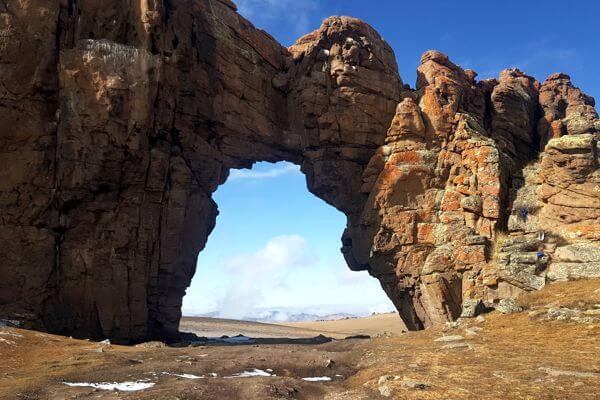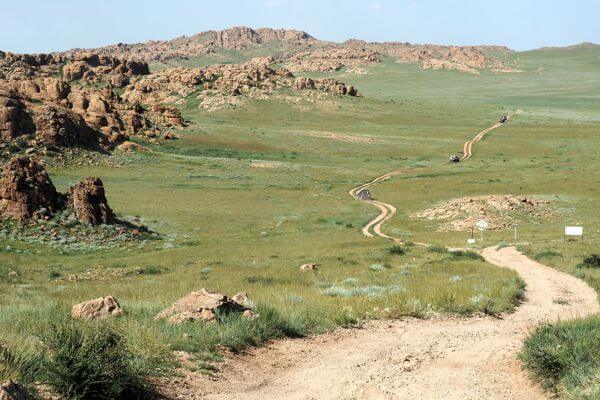Best of Mongolia
(30 days)



short description
Detailed description

Karakorum
Today we will set off for a driving day to Karakorum (also called Kharhorin).
Karakorum is the site of the 13th century capital of the Mongolian Empire created by Genghis Khan. The founding of Karakorum started on the ruins of Turug and Uigur cities in the Orkhon valley at the eastern end of the Khangai Mountains in 1220 by the Genghis Khan’s order. It was completed 15 years later during the Ugedei Khan’s reign. The town was a very cosmopolitan and religiously tolerant place.
The silver tree, part of Möngke Khan’s palace has become the symbol of Karakorum.
The highest peak of its prosperity was from 1220 to 1260. The specific feature of this stage is that Karakorum existed as the great capital of the Euro-Asian Empire with Mongolia as its core and as the centre of politics, economy, culture, religion, intellect, and diplomacy and the prominent tie of international relations.
Between 1260 and 1380 Karakorum lost the status of the Great Mongolian Empire and became the capital of Mongolia. When Khublai Khan claimed the throne of the Mongol Empire in 1260, as did his younger brother, Ariq Boke, he relocated his capital to today’s Beijing. Karakorum was reduced to the administrative centre of a provincial backwater of the Yuan Dynasty.
In 1368, the rule of Mongolian Yuan Dynasty collapsed and the centre of Mongolian government was shifted to its homeland after 110 years since Kublai Khan moved the Empire capital to China in 1260. It gave Karakorum a chance to prosper again.
In 1388, Ming troops under General Xu Da took and destroyed the town.
Today nothing is left from this legendary city.
In 1580, when Abtai Sain Khan together with his brother, lord Tumenkhen, visited the 3rd Dalai Lama and expressed their wish to build a temple in Mongolia, he advised them to reconstruct one old temple in Karakorum. The temple in Takhai ruins that was restored in 1588 according to the Dalai Lama’s recommendation is the Main Zuu temple of Erdene Zuu monastery.
Now Erdene Zuu Monastery is all that remains of what once was a huge monastery of 100 temples and about 1.000 lamas residing there. We will explore the grounds of Erdene Zuu Monastery surrounded by its massive 400 m X 400 m walls. We will be guided around the 3 remaining temples: Dalai Lama, Zuu of Buddha and Lavrin Temple.
Another place we will visit will be Karakorum Archaeological Museum. It is a small museum but housed in a modern well-run building with good lighting and display cases with clear English labels. The exhibits include dozens of artefacts dating from the 13th and 14th centuries which were recovered from the immediate area, plus others that were found from archaeological sites in other parts of the provinces, including prehistoric stone tools. You’ll see pottery, bronzes, coins, religious statues and stone inscriptions. There’s also a half-excavated kiln sunk into the museum floor. Perhaps most interesting is the scale model of ancient Karakorum, which aims to represent the city as it may have looked in the 1250s, and is based on descriptions written by the French missionary William of Rubruck. Another chamber exhibits a most recent addition, a Turkic noble tomb with wall paintings and artifacts, including gold items and jewelry. There is a short video of actual burial site.
We will also see the Turtle Rock and the Phallic Rock, visit little market behind walls exposing local arts by locals.
(Ger camp L, D)

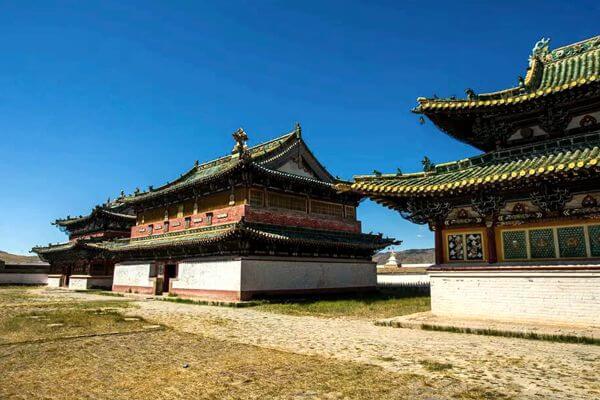
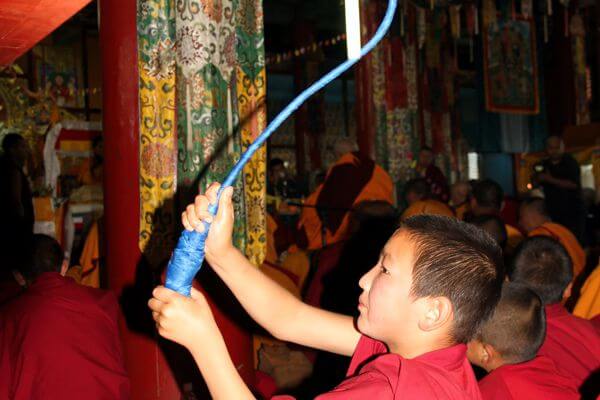



Tsenher hot spring
This morning we will driving westward in the direction of Khangai Mountains. On average, the Khanggai Mountains are 2500-3000 M above the sea level and are composed of mainly granite, intrusive chert and sandstone belonging to Paleozoic era. The Khanggai Mountains is about 800 km long, ranging from Zavkhan province territory to Tuv province. They function as the continental divide of the world water system.
The green mountainsides and the network of smaller and larger rivers offer excellent pastureland for the herds of horses, yaks and cows.
In the afternoon we will reach Tsenkher hot spring. This resort has a large open-air pool at its customer’s disposal. The hot water of the pool flows continuously in from the hot water spring. At the spring, the temperature of the water is over 80 ° C. A complex pipelines system regulates the water temperature. Some will spend hours sitting in the pool talking to their friends while staring at the stars or scanning the nightly nature around them.
(Ger camp B, L, D)


Tsetserleg & Terkhiin Tsagaan Nuur
In the morning we will reach Tsetserleg, capital city of Arkhangai province. It is a lovely little town surrounded by forested hills. Here we will visit the Buyandelgeruulekh Monastery, the town main functioning monastery and the nice little Museum of Arkhangai located in Zayaiin Gegeenii Monastery. From the museum we will walk hill upward to a small abandoned monastery and enjoy the beautiful view we have from there over Tsetserleg and the surrounding hills.
We will eat lunch in a local restaurant. In the evening we will reach Terkhiin Tsagaan Lake. It is one of the most beautiful lakes of the country. The lake is surrounded by extinct and craterous volcanoes, and was formed by lava flows from a volcanic eruption many millennia ago. As a result of the volcano eruptions the landscape is covered with black volcanic rocks.
(Ger camp B, L, D)
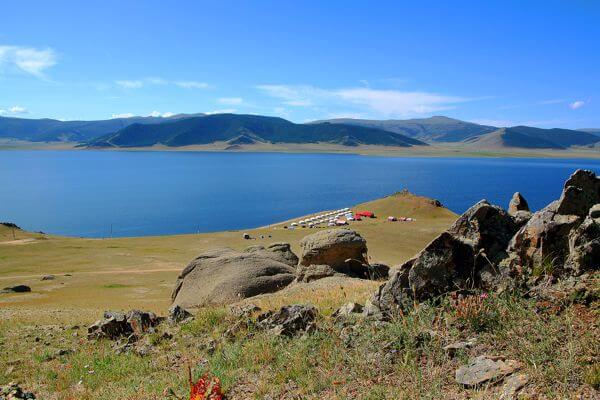

Khorgo- Terkhiin Tsagaan Nuur National Park
Today we will relax around the White Lake (also named the Terkhiin Tsagaan Nuur). We will make an excursion to the top of Khorgo Uul Volcano and we will pass the gorges that lead from Tariat to the volcano.
The volcano crater is 200 m wide and 100 m deep and is covered with trees at the back and around the opening of the crater. To the south of Khorgo there are numerous basaltic “gers” formed during the cooling of lava; some of the gers have gates and upper holes and reach 1.7 m high.
(Ger camp B, L, D)
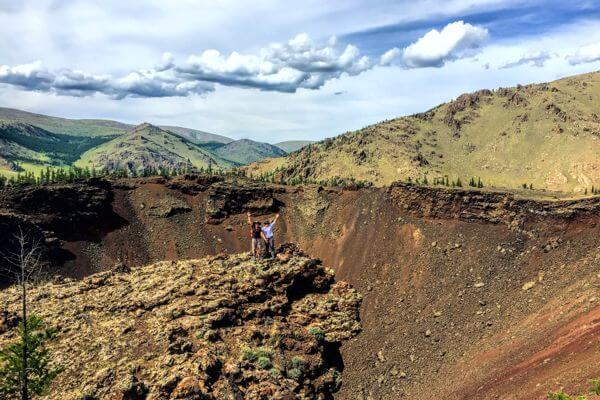

Zuun Nuur
We will drive for 2 consecutive days’ northwards to reach Khovsgol Lake. We will drive through the central grasslands where you will see large herds of horses, cows and yaks. You will cross several rivers, smaller and larger ones, all full of fish. Tonight we will reach Dzuun a small lost lake in the middle of the Mongolian steppes. You’ll have a chance to observe several water birds on the lake.
(Tented camp B, L, D)


Khovsgol Lake
Today by lunch time we will reach Moron, capital city of Hovsgol province. Nearby to Moron, we will visit the Uushig Deer Stone complex. Evidence of Prehistoric people’s art work known as deer stones and burial mounds and continue on our driving and reach the Huvsgul Lake late evening.
Mongolian blue pearl, the Khovsgol Lake. It is a huge 2.760 square km alpine lake (130 km in length and 40 km in width), surrounded by mountain chains of more than 2.000 meters high, thick pine forests and lush meadow with grazing yaks and horses. More than 100 small rivers and streams feed the lake with crystal clear water. Water exits the lake through only one river, the Egiin, whose waters eventually reach the Baikal Lake. The lake contains about 1.5% of the world’s fresh water (excluding water contained in the icecaps). The lake and rivers are full of fish. Around a dozen species of fish inhabit the lake and rivers. The most well-known are the sturgeon, grayling, lennok, salmon, taimon, etc.
(Ger camp B, L, D)

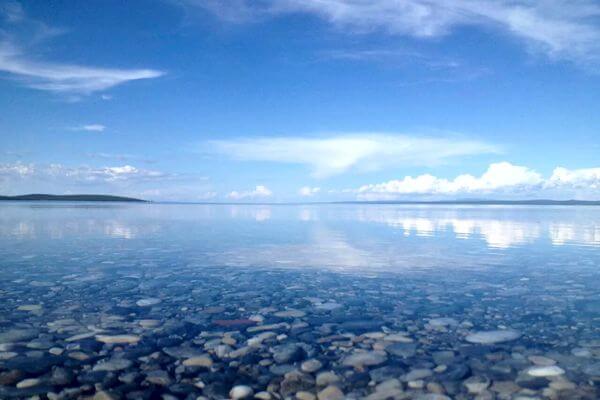

Khovsgol Lake
We will spend a full day exploring the lakeshore and surrounding mountains. For those interested they will have the possibility to go horseback riding, visit reindeer families, go hiking and canoeing (if weather permits). Tsaatan or Dukha, one of the last remaining reindeer herders of the world. Their unique way of life is centred and structured around reindeer and guided by Shamanism, ancestral spiritual practice based on nature worship.
(Ger camp B, L, D)


Telmen Lake
Today we will head westwards passing Ikh-Uul and Tosontsengel village of Zavkhan Province. End of the afternoon we will reach Telmen Lake. Telmen is a beautiful lake which hosts abundant birdlife. The lake lies near the boundary between the forest-steppe and steppe ecosystems. You will find different kinds of landscape around the lake such as sand dunes, beautiful mountains, green forest and several rivers and other lakes. Lake Telmen, a closed lake basin, is slightly salty (about 4g per liter salinity). Here you can see the rare desert flower “zambaga”. We will enjoy some hiking and relaxing near the lake.
(Tented camp B, L, D)
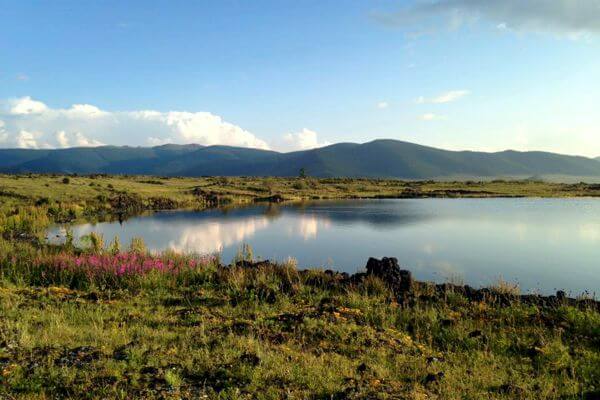

Ulaagchinii Khar Lake
We will start driving on Mongolia’s worst roads to enter one of Mongolia’s least visited regions, Western Mongolia. Embedded in the sand dunes belt there is Ulaagchinii Khar Lake is located to west side around 1000 km from Ulaanbaatar capital city. The lake is surrounded by huge sand dunes in the north and mountain hills in the southern shore. Beautiful a view.
(Ger camp B, L, D)


Senjit Rock & Mukhart Oasis
Today we will drive to Senjit Rock, the stone gate that has a shape of granite rocky arch located on a top of hill. In ancient times the rock used to be solid but the strong wind carved the gate into today’s formation over millions of years. The size of the gate is 6m in width, 3.5m in height and a nature beauty of the area and stands on 2773 meter above sea level. On your right hand side you will have a first glimpse of Bor Khyariin Els. Bor Khyariin Sand Dunes are about 180 km long, 15 km wide, and 300-meter high. Sand dune has few passages and offers a beautiful panoramic view on the surrounding area. All along the sand dune a river Khungiin flows in length of 200 km and is a vital life source to desert people and their cattle.
Further we will continue to Mukhart Oasis. Several sites of the sand dunes harbour small or big rivers. The most interesting one is Mukhart River arises beneath the sand dunes and flows throughout the desert and finally join Zavkhan River. We will climb dunes and hike around the river. There has been eco-friendly project led by a researcher who initiated tree planting some years ago. Now the river is surrounded by trees, bushes and a heaven for animals.
(Tented camp B, L, D)



Airag & Khyargas Lakes
The Great Lakes Depressions is a region that stretches out from Uvs to Khovd aimag over about 40.000 square kilometres. The Great lake depression is a semi-arid desert region delimited westward by the Altai Mountain Range. In spring, melting snow from the Altai Mountain ends up in the depression’s lakes. Being deprived of outlets to the sea, those salt lakes become giant evaporating points.
Later during the day, we will reach Khyargas Lake which is famous for having the least number of mosquitoes at any time of year, and its banks are like a pleasant seashore. On east shore of the lake we will visit 5 to 6-meter-long 20-meter-high white cliff called Khezuu Khad by locals. Spring time many migratory water birds nestle and breed.
(Ger camp B, L, D)


Extra Relaxing at the Lakes and Camel Riding
After having driven through half of Mongolia, we will relax for another day at the lakes. Will have chance to swim or fish in the lakes.
(Ger camp B, L, D)


Ulaangom and Kharkhiraa Mountain
Uvs province in the far north west of Mongolia is a spectacular region of permanently snow-capped mountains, glaciers, torrential rivers, salt-water and freshwater lakes, sand dunes and a fantastic variety of animals and plants. End of the afternoon we will reach Ulaangom, capital city of Uvs Province, where we will visit the local market to stock up with food.
After our short beak at the market we will go on driving on a rough but scenic road into the Kharkhiraa valley. We will reach the Kharkhiraa River where we will set up our tented camp. This river finds its sources in the Kharkhiraa Mountain. Its water flows into the Uvs Lake.
(Tented camp B, L, D)


Uureg Lake
Today we will head for Uureg Lake, which lies close to the Russian border and Siberia. It is a large, beautiful slightly salt-water lake surrounded by glorious mountains and some snow-capped 3000 meters plus peaks. The mouth of the valley leading into the lake is lined with nomad’s summer gers. The scene is breath taking and so are the people. We will have the opportunity to visit nomad families.
Before reaching the lake we will cross the Ulaan Davaa Pass, enjoying the views of the red mountains and sprawling valley floor.
We will spend the whole afternoon around the lake. The lake is great for swimming and there are good opportunities for hiking, fishing, bird watching, etc. Sunsets and sunrises in this dramatic scene can be stunned. They make us feel as if we are the only people on earth or as if we have reached the edges of the viable world. We will camp along the lake shore.
(Tented camp B, L, D)


Achit Lake & Olgii
From here we will drive to Achit Lake. Achit Lake is the largest freshwater lake in the province. It is on the border of Uvs and Bayan Ulgii provinces. The lake is 28 km long, 16 km wide and 10 m deep with exact location between Kharkhiraa Uul and Turgen Uul in Uvs aimag western Mongolia at 1,464 metres above sea level. It is locations is an easy detour between Olgii and Ulaangom. It offers stunning sunsets and sunrises as well as good fishing. The lake is home to an astonishing array of water bird flocks. The coast is covered with steppes mostly hilly but swampy in northwest and northeast.
Before reaching the lake we will cross the Ogotor Hamar Pass from which you will have breath-taking views of the region.
Later in the evening, we will reach the most western aimag of Mongolia, Bayan-Olgii. Unlike the rest of Mongolia, which is dominated by Khalkh Mongolians, about 90% of Bayan-Olgii’s population are Kazakh, almost all of them Muslims.
Olgii, capital city of the aimag is a Muslim influenced ethnically Kazakh city. It is home to a mosque.
Olgii’s mosque and madrasah (Islamic place of learning) is worth a quick look, especially on Friday at lunch time when weekly prayers are held, though you may not be allowed inside. The mosque holds the offices of the Islamic Centre of Mongolia. Its unusual angle is due to its orientation to Mecca.
We will spend the afternoon strolling around in the aimag centre. We will visit the museum that has some interesting displays and gives a good overview of Kazakh culture.
(Ger camp B, L, D)
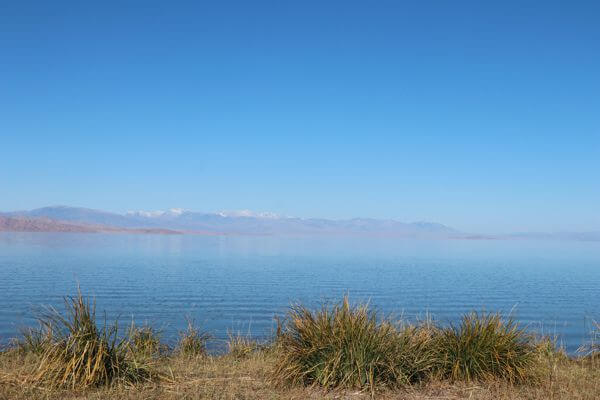


Overnight in Eagle Hunter family
Today we will head to eagle hunter family. During this stay we will live a life of a Kazakh eagle hunter! We will be follow our eagle hunter and his bird on horseback for 3-4 hour treks through the Altai Mountains looking for prey. The rest of the time we will be interacting with the family members (Kazakh people tend to have large families) and experiencing their daily life. Kazakh people are known with their warm hospitality so prepare to feel greatly welcome in their home.
(Family stay B, L, D)


Namarjin Valley & the Tsambagarav Mountain
After breakfast we will set of for Namarjin Valley. On the way you will have excellent views of Tsambagarav Mountain (4200 meters), one of Mongolia’s most glorious snow-capped peaks. We will also drive along several Kazakh settlements and a beautiful turquoise lake. The grassland in this valley is covered with a carpet of alpine flowers. The whole day we will explore the region of lush valleys, dozens of little lakes and permanently snow-capped peaks.
(Tented camp B, L, D)


Khovd, Bayangol Valley & Khar Us Nuur National Park
We pass through Bayangol Valley from where you will have a fine view over Khar Us Nuur (Black Lake Water), the second largest freshwater lake but in average depth of only 4 m. Khovd Gol (River) flows into this lake and its shore is not easy to approach with vegetation and marshes. In the beginning of the afternoon we will pass Khovd, capital city of Khovd Provinve. Sangiin Kherem is the Mongolian name for the remains of the Manchu fort in the Northern part of Khovd city, Mongolia. The fort was built in the 18th century, and later became the seat of the Manchu amban and his office. The fort has a quadratic layout, the walls are made of clay. There were gates at the east and west and watch towers at the four corners. The fort’s walls were surrounded by water ditches, with wooden bridges to access the gates. The remaining walls are 3 metres high and 1.5 metres thick, oriented at the four corners of the earth, each side was 0.33 km. According to Russian Geographer M. V. Pevtsov, who visited the city in 1878, the height of the walls back then was 4.5 metres. The southern portion of the fort was occupied by the Manchu amban, treasury, offices, and military barracks. The eastern part was occupied by commercial firms, a Chinese Buddhist temple and a mosque. Since the year 1912 when city Khovd was liberated from the Manchu administration and the fort was taken by force, the citadel declined.
In the evening we will set up our tents close to a nomad family. We will experience the warm hospitality offered by the Mongolian families. For dinner we will be offered a typical Mongolian barbeque that will be prepared by nomads. Those who want will have the opportunity to try the “airag” or fermented horse milk. Our guide – translator will help us to forge contact with the local population.
(Tented camp B, L, D)



Tsenheriin Agui
The Tsenkheriin Agui (also known as Khoid Tsenkher) caves are for their cave paintings, dates from 20.000 years ago. Interesting is that both mammoths and ostriches are depicted on the walls, proving that both lived in Mongolia up to approximately 15,000 years ago.
The cave has numerous passages to explore. The largest cavern (12 by 18 meters) is about 15m high. We will make a short trekking in the cave’s area.
(Tented camp B, L, D)


Altai
Today we will reach Altai, capital city of Gobi-Altaï Province. Altaï is nestled between the mountains of Khasagt Khairkhan Uul (3579m) and Jargalant Uul (3070m). We will overnight somewhere past Altai.
(Tented camp B, L, D)


Boon Tsagaan Nuur
A chain of large and small saline lakes lies at the foot of the Gobi-Altai in the broad inter-mountain depression between the Khangai and Gobi-Altai ranges. They are shallow, with a saucer shaped depth profile, and vary considerably size both seasonally and from year to year. Some may dry out completely in certain years. They all receive their inflow from rivers which rise in the Khangai Mountains, and no permanent inflow comes from the Gobi-Altai. The principal lakes are the Boon Tsagaan Nuur, Tatsiin Tsagaan Nuur, Adgiin Tsagaan Nuur, Orog Nuur. As the lakes shrinks in summer, it leaves areas of salt marsh, especially to the east of the lake.
Today, we continue driving further to one of those lakes, the large saltwater Boon Tsagaan Nuur lake (in the south-west of Bayankhongor Province), at the end of Baidrag river that is located at the foot of the Gobi-Altai Mountain Range.
Boon Tsagaan Nuur is one of the main stopover sites of migratory birds and also breeding ground. This site is very popular with birdlife, especially the relic gull, whooper swan and geese. We will record most ducks, geese, waders and passerines in this lake.
(Tented camp B, L, D)


Ikh Bogd Mountain
The mountain of Ikh Bogd, the highest peak of the Gobi – Altai Mountain Range, attains an altitude of 3,957 meters above sea level. In 1957 severe earthquakes took place in Ikh Bogd, as a result of which was opened up an enormously long surface fracture (the Bogd Fault) and a vast area underwent major deformation.
(Tented camp B, L, D)
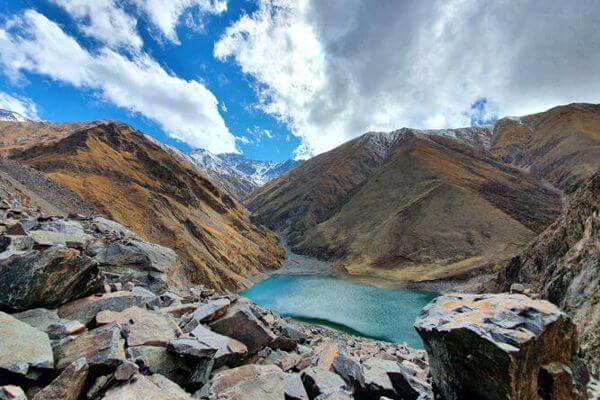

Hiking to Oyu and Nomin Lakes (Turquoise & Azure Lakes) in Ikh Bogd Mountain
During major earthquake of magnitude 11, one peak of mountains collapsed and rocks filled the valley where river was flowing and now two beautiful fresh water lakes are formed cut by massive rocks in between.
We will set out early morning for whole day hiking to reach both lakes. Your effort will be worth. The view is amazing.
(Tented camp B, L, D)


Orog Lake & Tsagaan Agui Cave & Drawings
We continue further driving to the saltwater Orog Lake-this lake is in the end of the Tuin River, which passes through small city of Bayankhongor.
Orog Nuur is located at the foot of the Ikh Bogd Uul massif, in the Gobi Valley of Lakes. The lake is a good spot to watch birdlife. Further on we will stop at Tsagaan Agui Cave also named White Cave.
The White Cave is located close Bayanlig village. It is situated in a narrow gorge, and is home to numerous ancient cave drawings. The cave once housed Stone Age human beings 700,000 years ago. It also features a crystalline inner chamber. (N44°42.604′, E101°10.187′)
There are also Petroglyph Writings close to Bayanlig village. Bichig Khad, literally Stone with writings. They have been dated to 3, 000 years ago and are considered sacred. The animal drawings here also provide evidence that Mongolians have been domestic, there is other evidence that that they once farmed and domesticated animals.
(Tented camp B, L, D)


Khongoryn Els
Khongoryn Els will be our next stop. These are Mongolia’s largest sand dunes. Those impressive dunes of 275 meters high in some places, stretch from East to West over more than 100 km. Behind the sand dunes we will see the impressive black rocky mass of the Sevrey Mountain. Those who are courageous will climb to highest dune equivalent of 40 store building. Once you reach the top of the dune, your effort will be rewarded. The whole environment looks full of mysteries, and you get amazed how possibly the landscape can be like that. After dune excursion will visit camel breeding family. It is our tradition to offer food and drinks without asking the visitors.
(Ger camp B, L, D)


Bayanzag or Flaming Cliff
Today we will drive to Bayanzag also known as the “Flaming Cliffs” is the worldwide renowned place where palaeontologist Roy Chapman Andrews found dinosaur bones and eggs. The surrounding landscape is a beautiful combination of rocks, red sand and scrubs. Here we will spend some time exploring the cliffs.
(Ger camp B, L, D)


Yolyn & Dungenee Am
The Gobi is a cold desert, with frost snow on its dunes during the winter months. Besides being quite far north, it is also located on a plateau roughly 910–1,520 meters above sea level, which further contributes to its low temperatures. An average of approximately 194 millimetres of rain falls per year in the Gobi. Additional moisture reaches parts of the Gobi in winter as snow is blown by the wind from the Siberian Steppes. These winds cause the Gobi to reach extremes of temperature ranging from –40°C in winter to +50°C in summer.
Today we will take a ride through the beautiful gorges of the imposing Altai Mountain Chain. We will pass through the Yolyn and Dungenee Am both located in the Gobi Gurvansaikhan National Park. Ancient rivers carved those green valleys.
We may catch a glimpse of the wild Argali sheep, the Ibex, the desert gazelles or the Golden Eagles. We will also pay a visit to the little museum of the park where you can admire a collection of dinosaur bones and stuffed animals.
(Ger camp B, L, D)


Tsagaan Suvarga
Tsagaan Suvraga, The Cliff is 30 meters high and 100 meters wide. Over thousands of years the wind has created his amazing structure.
From a distance Tsagaan Suvraga resembles the ruins of an ancient town with crumbling buildings. Painted and carved on the rocks are ancient images of people hunting ibex with long bows and petroglyphs depicting wild animals and cattle. There are also Turkic inscriptions with different seals and images in the caves here.
A fissure running east to west from the upper slopes of a mountain down across the steppe. Looking into the fissure you will see high mud columns rising from the depths below. The yawning gap looks like the open jaws of some fabulous animal. Some of the caves are multi chambered one of which stretches back over 70 metres.
(Ger camp B, L, D)


Baga Gazriin Chuluu
After breakfast in our hotel restaurant, we will leave for the Mongolian countryside. Our first stop will be 250 km southward in the beautiful region of Baga Gazrin Chuluu. It is a huge granite formation in the middle of the Mongolian sandy plane.
On open plain we will visit the remains of a small monastery named Delgeriin Chior Monastery. You will be entering in Ger, huge impressive 12 walls Ger richly decorated and carved used by monks to chant during colder season when the stone monastery gets too cold to be inside.
End of the afternoon we will drive and hike around in the area. We will visit the picturesque ruins of a small monastery that are hidden in a nice little protected valley and wander between huge endless piled granite rocky hills as if they were put. There is a little spring in the rocks of Baga Gazriin Chuluu which is renowned for its eye healing power. Try healing your eyes as locals do and drip some magic water into your eyes.
(Ger camp B, L, D)
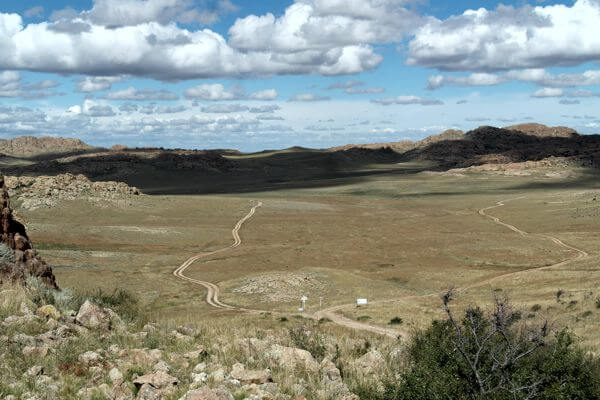

Drive back to Ulaanbaatar
After breakfast we will be heading to Ulaanbaatar. Our team will take you to your hotel. Enjoy your free afternoon and evening. You might check the beautiful cultural show enjoy the colorful & rhythmic Mongolian dance, throat singing and admire contortionists.
(B, L)
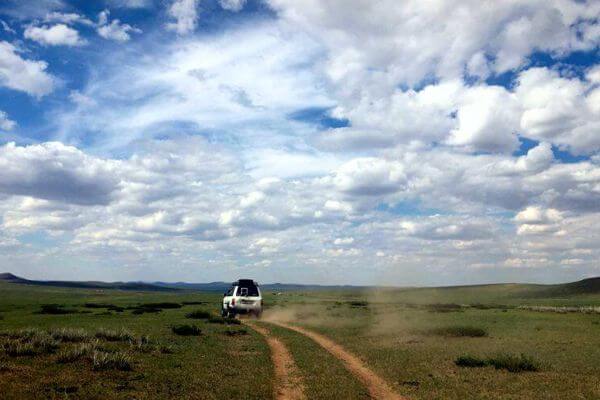
Option 1: days to Khoton & Khurgan Lakes
From Olgii we will drive further westwards into the direction of the Tavan Bogd Mountain. We will reach in the afternoon the Khoton and Khurgan Lakes. They are pretty lakes at an altitude slightly over 2.000 meters’ altitude. The lakes are second largest and clearest of all lakes of Mongolia. Average depth is 26 m and deepest reaching 58 m. Khurgan and Khoton lakes are connected by wide natural channel. South of the lake, into the direction of China you will see snow-capped Altai Mountain Chain. The landscape around the lakes is a breath taking and picturesque.
On the way we will stop at some ancient Gokturk’s stone monuments (1500-2000 years old) near Biluut Hill.

Option 2: Tolbo Lake
On the way from Olgii to Khovd, we will stop for a day at Tolboo Lake, a salt water lake, situated at 2080 metres above sea level. If you are not afraid of icy water, you can go swimming. The lake is the site of a famous battle in the 1920’s struggle for Mongolian independence and several monuments recognize the heroism of Mongolian soldiers. We stop in Deluun village to visit the local WWII monument, then continue to the Chigertei River, whose unusually warm water is fed by a nearby hot spring.

Option 3: Eej Khairhan 3 days
This ancient stone massif Eej Khairkhan (Mother Mountain) rises from the desert and resembles a prone woman. The massive has 7 interconnected water pots. When the first pot is filled up, it creates a little waterfall by spilling its excess water to the next pot through the stone threshold, which is 40 to 50 cm long.
The mountain is worshipped by locals and believed to protect families with children.
Nearby the water pots there is a little cave monastery where the monk knows as the “Monk with the white horse and the white camel” lived. About 30 minutes-walk westwards are some spectacular, ancient rock paintings of ibex, horsemen and archers. This area was protected in 1992.

INCLUDED
- Land transportation
- 15 nights Ger camp stay
- 14 nights tented camp stay
- 1 night family staying
- Meals 29B, 30L, 29D
- Tour guide
- Camping and kitchen equipment
- National park, museum, monastery entrance fee
NOT INCLUDED
- Hotel in Ulaanbaatar
- City touring
-
Medical, trip insurance and
evacuation costs - Alcoholic and soft drinks
